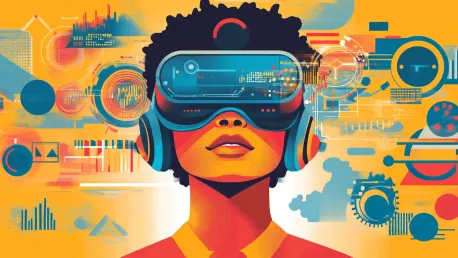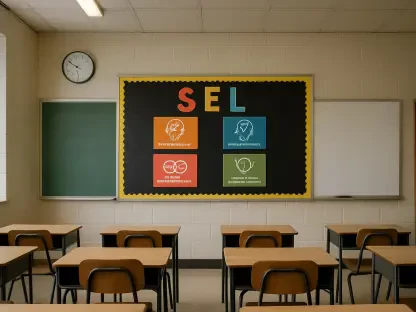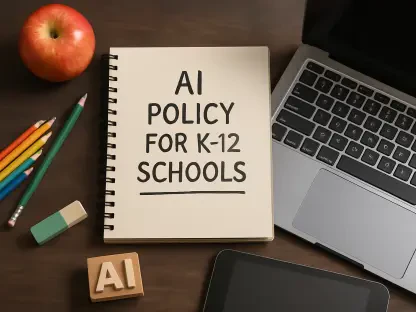Educational technology, commonly lauded as the transformative force in modern education, has experienced unprecedented growth, especially in the aftermath of the COVID-19 pandemic. As schools and districts hastily integrate an array of new tools, a critical question surfaces: Are these technologies genuinely meeting the diverse needs of students? This critical examination delves into the pivotal role of scientific research and grassroots input in shaping effective, impactful educational technology solutions.
The Historical Gap in Evidence-Based Educational Resources
Historically, the education sector has grappled with a significant lack of high-quality, evidence-backed resources. Unlike fields such as healthcare, where scientific research directly informs practice, education often relies on market-driven solutions that may not be rigorously tested. The post-Hurricane Katrina period in the New Orleans school district exposed substantial challenges, namely a systemic issue of inadequate educational tools. This persistent scarcity of robust, research-supported solutions has long hindered efforts to effectively cater to the diverse needs of students.
Teacher input has too often been overlooked, leading to the widespread adoption of tools and technologies that fail to align with classroom realities. Many products originate from developers’ workspaces without comprehensive scrutiny or real-world testing. This disconnect results in a gap between the theoretical benefits of educational technology and its actual performance in classroom settings.
Embracing Rigorous Research and Development
The education sector stands in stark contrast to research-intensive fields like healthcare and energy, highlighting the need for a paradigm shift. In these industries, research and development (R&D) is foundational, ensuring innovations are both practical and evidence-based. For education to experience similar advancements, it must adopt a model where every new tool undergoes rigorous scientific examination before being introduced to students and teachers.
A comprehensive R&D framework in education holds the potential for significant improvements. When educational technologies are grounded in solid empirical research and tested across diverse learning environments, the resulting tools can be both innovative and effective. This method will pave the way for genuine advancements in student learning and thriving in varied educational settings, addressing the unique challenges that schools face today.
The Crucial Role of Educator and Community Engagement
Incorporating input from educators, caregivers, and communities is essential to developing effective ed tech solutions. Teachers, who work on the front lines of education, hold invaluable insights into what works in classrooms and what does not. Consistent engagement with these stakeholders ensures that the tools created are practical, user-friendly, and genuinely beneficial for those who will use them daily.
Moreover, understanding the specific needs and challenges faced by students and caregivers allows for the creation of more tailored and inclusive solutions. This participatory approach enhances the relevance of educational technologies and fosters a sense of ownership and acceptance among users. When the voices of educators and community members are heard and respected, the resulting tools are more likely to address the real needs of the educational environment effectively.
Striking a Balance Between Scientific and Practical Insights
Developing ed tech products that seamlessly blend scientific evidence with practical classroom experiences is critical. Tools must not only be backed by robust research but must also be adaptable to the dynamic nature of educational environments. Educators should share success stories and challenges, providing real-world data to inform product development and ensure the solutions created are both effective and applicable.
Collaboration among teachers, researchers, and developers can bridge the gap between theory and practice. Drawing from diverse expert sources and classroom experiences enables the creation of enriched educational tools that cater to a wide range of learning styles and needs. By balancing scientific rigor with practical usability, educational technologies can achieve greater relevance and impact in the classroom.
Inclusive and Equitable Design in Ed Tech
Ensuring that educational technologies are designed with inclusivity and equity in mind is fundamental for their success. This requires accounting for the varied socio-economic backgrounds of students and ensuring that products are accessible to all. Inclusive design principles should guide the incorporation of diverse perspectives from the early development stages through to final product releases.
Accessibility features, such as adaptive learning pathways and multi-language support, are crucial components of inclusive design. These features ensure that ed tech tools can serve different demographic groups effectively, thereby minimizing educational disparities and fostering equal learning opportunities. By considering the full spectrum of student needs, developers can create tools that support all learners, regardless of their backgrounds.
Ethical Considerations in Ed Tech Development
The ethical dimensions of ed tech development cannot be overstated. Products must prioritize inclusivity, equity, transparency, and data privacy. Ethical considerations are not merely about meeting regulatory requirements but about doing what is right for students, educators, and communities. Ensuring data privacy and security is essential, especially as more educational activities shift to online platforms.
Ed tech developers need to build trust by being transparent about data usage and implementing robust security measures to protect student information. This transparency fosters a culture of trust and responsibility, ensuring that ethical considerations are at the forefront of product development. By prioritizing these values, ed tech solutions can create safe and inclusive learning environments that genuinely benefit students.
User-Friendly Interoperability of Educational Tools
Educational technology, often heralded as a revolutionary force in contemporary education, has witnessed rapid and unprecedented growth, particularly in the wake of the COVID-19 pandemic. As schools and districts rush to adopt a myriad of new tools, an essential question arises: Are these technologies genuinely addressing the varied needs of students? To answer this, it is crucial to examine not just the tools themselves but also the role scientific research plays in validating their effectiveness. Simultaneously, incorporating feedback from teachers, students, and parents—the grassroots stakeholders—ensures that these tech solutions are grounded in real-world classroom experiences. This critical analysis underscores the importance of a balanced approach where both scholarly research and grassroots input converge to form educational technology that truly benefits learners. By focusing on this dual approach, we can hope to create tech solutions that are not just innovative but also pragmatic, addressing the multifaceted needs of today’s diverse student populations.









